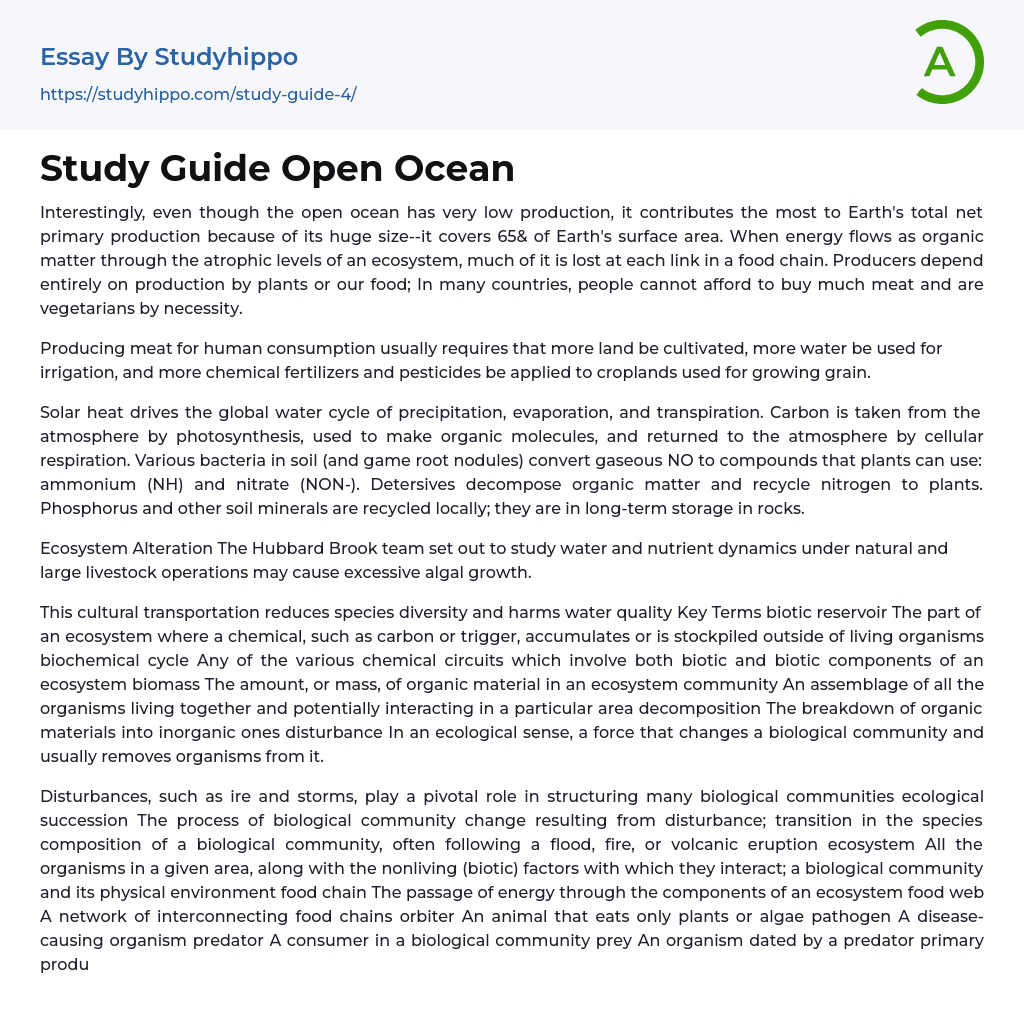The open ocean, which covers 65% of Earth's surface area and has low production, contributes the most to Earth's overall net primary production. Energy flow declines gradually in an ecosystem's food chain due to loss at each link. Producers rely on plant or our food for survival, leading some individuals to become vegetarians due to financial constraints in certain countries. Meat production requires increased cultivation land area, water for irrigation, and chemical application for grain grown on croplands. The global water cycle is driven by solar heat driving precipitation, evaporation, and transpiration. Photosynthesis converts carbon from the atmosphere into organic molecules that are later returned through cellular respiration. Soil bacterial activity transforms gaseous NO into ammonium and nitrate compounds used by plants for growth while detergents break down organic matter allowing nitrogen recycling back to plants. Phosphorus is stored long-term in rocks with local
...mineral recycling occurring naturally. Large livestock operations may lead to excess algal growth while natural ecosystems showcase optimal nutrient and water dynamics.Transportation of culture negatively impacts species diversity and water quality.
The accumulation of chemicals outside of living organisms in biotic reservoirs and the biochemical cycles within ecosystems have a significant impact on ecological processes. The biomass of organic material and the community of organisms residing in a specific area are also crucial factors. Disturbances like fires, storms, and the decomposition of organic matter into inorganic substances contribute to shaping biological communities. Ecological succession, which is the natural transition in species composition following disturbances such as floods, fires, or volcanic eruptions, further impacts ecosystems. Herbivores or orbiters feed solely on plants or algae while predators consume other organisms. The organism being
eaten is called prey. Primary production refers to producers converting solar energy into organic compounds during a specific time period. Species diversity encompasses both species richness and relative abundance within a community that includes non-living components like physical elements alongside living ones like organisms. Energy flows through food chains or webs consisting of interconnected chains within an ecosystem.HTML:
A pathogen is an organism that causes disease and can have an impact on the health of a community. Furthermore, ecosystems' functioning also relies on symbiotic relationships.
- Organic Chemistry essays
- Acid essays
- Calcium essays
- Chemical Bond essays
- Chemical Reaction essays
- Chromatography essays
- Ethanol essays
- Hydrogen essays
- Periodic Table essays
- Titration essays
- Chemical reactions essays
- Osmosis essays
- Carbohydrate essays
- Carbon essays
- Ph essays
- Diffusion essays
- Copper essays
- Salt essays
- Concentration essays
- Sodium essays
- Distillation essays
- Amylase essays
- Magnesium essays
- Acid Rain essays
- Environmental Disaster essays
- Sustainable Development essays
- Agriculture essays
- Albert einstein essays
- Animals essays
- Archaeology essays
- Bear essays
- Biology essays
- Birds essays
- Butterfly essays
- Cat essays
- Charles Darwin essays
- Chemistry essays
- Dinosaur essays
- Discovery essays
- Dolphin essays
- Elephant essays
- Eli Whitney essays
- Environmental Science essays
- Evolution essays
- Fish essays
- Genetics essays
- Horse essays
- Human Evolution essays
- Isaac Newton essays
- Journal essays




